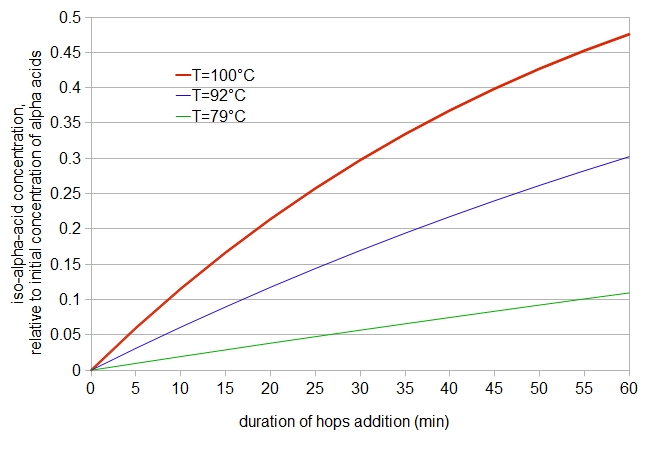Good stuff SRJ! Thanks for posting. Just for some context so I know where you are coming from, I have a couple questions. By one "large dose 48hrs before bottling" what is your quantity of the dose and batch size in your fermenter when you add this charge? Also, Im assuming you have dry hopped warmer too (65 degrees?). Just curious on what your own sensory analysis is comparing the warm vs cold dry hop temps. Ive read Janish's book several times now making the case for short cold dry hopping, but others (I think
@day_trippr and
@jturman35) reported the short cold method being described as more muted flavor/aroma compared to warmer temps. SO curious on what you have perceived as the differences too. Thanks!
EDIT: FYI, I just kegged my first beer I ever brewed, and I double dry hopped warm (3oz at each dry hop @ 68 degrees) after soft crashing to 57 degrees with no active fermentation dry hopping. Additionally, I used 0.5oz FWH and then 6 ounces total (3 @ 5 minutes left in boil and 3oz in whirlpool). So I used 12.5oz total. The 6oz in fermenter had about 5.75gallons of wort in the fermonster so thats about just over 1.0oz per gallon for me. Im at day 3 of keg carbing. Aroma is solid, flavor is solid too. I'll see how this pans out after about another week for the beer to carb and condition and report back.
Kudos on beer #1! Sounds like it went very well.
I used 15 ounces in my latest. 5 gallons. Here is the entire schedule:
.5 Columbus @ 15 mins
.5 Columbus, 1 oz Citra, 1 oz Mosaic, 1 oz Strata @ 200 for 15 mins
1 oz Citra, 2 oz Strata @ 175 for 30 mins
1 oz Strata @ 160 for 15 mins
1 oz Citra, 1 oz Strata at 1.030 SG (was Day 3.5) @ 68 degrees
1 oz Citra, 1 oz Mosaic, 3 oz Strata @ Day 12 @ 58 degrees (48 hours before bottling)
So, I dry hopped during active, warm, and also after fermentation, cold. I have also dry hopped both times warm. And I have skipped the fermentation addition, which I felt harmed the flavor of the beer, so I went back to that, but later in the fermentation.
I am not 100% firm on the processes, since there are so many variables (kinds of hops, amounts, methods, temps, etc). I WILL say that I have been trying to tamp down the hop burn, which I feel comes from dry hopping excessively during active, as well as dry hopping warm. So that is why I currently believe a small dh during active makes sense, followed by a soft crash and final dh cold.
As noted, there are so many variables and approaches. It makes sense to me that you would get higher extraction at warmer temps, but again, the newer research suggests that extraction happens quite quickly and works at lower temps. So if you are trying to avoid hop burn, it makes sense to me to dh colder.
I would suggest that you see what kind of hop burn/astringency you are getting and work from there... There is a balance somewhere that most of us are seeking, between maximizing hop flavor and minimizing hop burn...














![Craft A Brew - Safale BE-256 Yeast - Fermentis - Belgian Ale Dry Yeast - For Belgian & Strong Ales - Ingredients for Home Brewing - Beer Making Supplies - [3 Pack]](https://m.media-amazon.com/images/I/51bcKEwQmWL._SL500_.jpg)















































